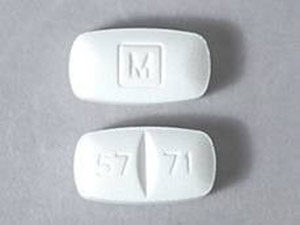Showing all 2 results
What is Methadone?
Methadone is a generic medication developed in Germany from 1937 to 1939. It was approved in the USA in 1947 for medical use. Methadone is also on the List of Essential Medicines by World Health Organization, which contains only those medicines that are safe and the most effective medications needed in the health system.
Methadone is a strong synthetic analgesic similar to morphine in its effects but less sedative than morphine. Methadone oral tablets are available as brand name drugs under the names Methadose and Dolophine.
Methadone comes in several formulations such as a tablet, dispersible tablet, solution, and concentrated solution. It also comes in injection only for administration by doctors.
What is Methadone Used To Treat?
Methadone is an opiate used in the treatment of opioid maintenance in opioid dependence and chronic pain.
Methadone detoxifies in opioid dependence in less than a month. A single dose of the medication has a rapid effect, and it reaches its maximum effectiveness within five days of use.
Pain-relieving effects of Methadone starts as soon as 20 to 30 minutes after a single dose and last for about six hours. After a long term use of Methadone, pain relief lasts for 8 to 36 hours in people with normal liver functioning.
Methadone is mainly for the management of:
Methadone Maintenance:
Methadone helps treat opioid use disorder. It is useful both as maintenance therapy or a short period detoxification for managing opioid withdrawal symptoms.
Methadone treatment programs for opioid maintenance or detoxification ranges from a few months to several years.
The main goals of maintenance are to suppress the abstinence syndrome, relieve opioid cravings, and block the euphoric effects of opioids.
Opioid Detoxification:
Methadone is an approved medication for the treatment of opioid addiction in many parts of the world, including America.
The use of Methadone for treating addiction is strictly regulated. Outpatient treatment plans must be certified by the federal Substance Abuse and Mental Health Services Administration (SAMHSA) and registered by the DEA (Drug Enforcement Administration) in the USA.
Pain:
Methadone is a useful analgesic in chronic pain.
Methadone is active at the NMDA receptor that makes it more useful for neuropathic pain. Due to the same reason, Methadone tolerance effects are less than that of other opioid analgesics.
Dosage
For short term moderate to severe pain:
The usual adult dosage for the management of mild pain initiates with 2.5 milligrams given every 8 to 12 hours, as needed. Slowly titrate the dose at an interval of three to five days to achieve maximum beneficial effects.
For detoxification of opioid addiction:
The starting dose for detoxification of opioid addiction is 20 to 30 milligrams. After a duration of two to four hours, the doctor may give you an additional 5-10 milligrams dose if required. Do not surpass more than 40 milligrams dose on the first day.
For maintenance of opioid addiction: The usual adult dosage for maintenance of opioid addiction ranges from 80 to 120 milligrams per day. A doctor will adjust and titrate the doses as required by the patient to achieve maximum therapeutic effects.
What Are The Side Effect of Methadone?
Most common side effects of Methadone include:
- Headache
- Sleepiness
- Tiredness
- Giddiness
- Constipation
- Nausea
- Vomiting
- Stomach pain
Precautions
Below are some precautions to follow before taking Methadone:
- Tell your doctor if you have a hypersensitivity to Methadone, any other opioids, or any inactive ingredients of Methadone pills.
- Inform your doctor about all the concurrent medications, supplements, vitamins, or any herbal products that you are taking.
- Consult to the doctor about your medical status, ever had an intestinal blockage or paralytic ileus, difficulty urinating, an enlarged prostate in males, Addison’s disease, thyroid, seizures, and pancreas, gall bladder, kidney, or liver diseases.
- Methadone passes through breast milk. Inform your doctor if you are a breastfeeding mother. The lactating baby may develop difficulty sleeping or breathing, and withdrawal symptoms.
- Methadone may decrease fertility in men and women. Talk to your doctor before taking the medication.
- Tell your dentists that you are on Methadone medication if you are going to have dental surgery.
- Avoid driving or using large machinery until you know the effects of Methadone on your brain and body.
- Methadone may cause constipation. Consult your doctor about changing your diet or suing some mild medicines to prevent or treat constipation.
Withdrawal
Abruptly stopping the medication of Methadone may cause withdrawal symptoms. The symptoms of Methadone withdrawal are more significant than symptoms of other opioids with shorter half-lives.
Physical symptoms of Methadone withdrawal include lightheadedness, tears in eyes, dilated pupils, sensitivity to light, slow or shallow breathing, runny nose, nausea, vomiting, diarrhea, fever, sweating, chills, tremors, pain in joints and legs, elevated pain sensitivity, high blood pressure, and fast heart rate.
Cognitive symptoms of withdrawal with Methadone include suicidal thoughts, depression, spontaneous orgasm, insomnia, delirium tremens, auditory or visual hallucinations, increase or decrease in sex drive, agitation, anxiety, nervousness, paranoia, delusions, and anorexia.
Symptoms of withdrawal or Methadone detox start appearing approximately within 24 to 36 hours after the last dose.
The initial symptoms of withdrawal often look like flu, but the withdrawal symptoms get severe with time and reach a peak in three to four days.
Prevent Methadone withdrawal by gradually tapering the doses when there is a need to discontinue the treatment. If withdrawal symptoms develop, consult a doctor about their treatment. Following are the ways to prevent and treat withdrawal:
- Drug treatment
- Guided Methadone therapy
- Emotional support


